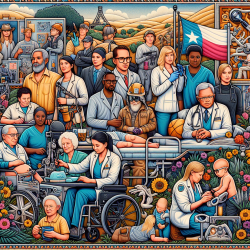Community-based participatory research (CBPR) has shown promising results in addressing pediatric oral health disparities, particularly within Indigenous communities. A recent study titled
Pediatric oral health: community-based participatory research by Ogenchuk et al. (2022) explores this approach and provides actionable insights for practitioners. Here, we break down key findings and discuss how practitioners can implement these outcomes to improve their skills and the oral health outcomes of children.
Understanding the Research
The study conducted by Ogenchuk et al. (2022) focuses on Thunderchild First Nation, an independent Cree community in Saskatchewan, Canada. The research utilized CBPR, engaging community members such as Elders, health care providers, teachers, and parents to identify strengths and barriers in oral health services. Thematic analysis and descriptive statistics revealed significant themes, including community resilience, the need for resource development, and barriers to accessing care.
Key Findings and Implementation Strategies
Community Resilience and Strengths
The study highlighted the community's resilience and the presence of supportive structures such as local dental clinics. Practitioners can build on these strengths by:
- Enhancing community-based dental programs and involving local health workers in oral health education.
- Leveraging existing community resources to promote oral health literacy.
Resource Development and Oral Health Literacy
The need for better resources and improved oral health literacy was a prominent theme. Practitioners can address this by:
- Developing culturally appropriate educational materials in both English and Cree.
- Organizing workshops and informational sessions that involve parents and caregivers, emphasizing preventive care and proper oral hygiene practices.
Barriers to Accessing Care
The study identified significant barriers such as transportation issues, financial constraints, and lack of awareness about available services. Practitioners can mitigate these barriers by:
- Collaborating with local organizations to provide transportation for dental appointments.
- Advocating for policies that reduce the cost of dental care and supplies for low-income families.
- Using multiple communication channels to disseminate information about available oral health services.
Encouraging Further Research
The study underscores the importance of ongoing research and community engagement. Practitioners should:
- Participate in or initiate further CBPR projects to continually assess and address the evolving needs of the community.
- Document and share successful strategies and outcomes to contribute to the broader body of knowledge on pediatric oral health.
Conclusion
Implementing the outcomes of this CBPR study can significantly enhance pediatric oral health in Indigenous communities. By leveraging community strengths, developing resources, and addressing barriers to care, practitioners can create sustainable, positive changes in oral health outcomes.To read the original research paper, please follow this link:
Pediatric oral health: community-based participatory research.










